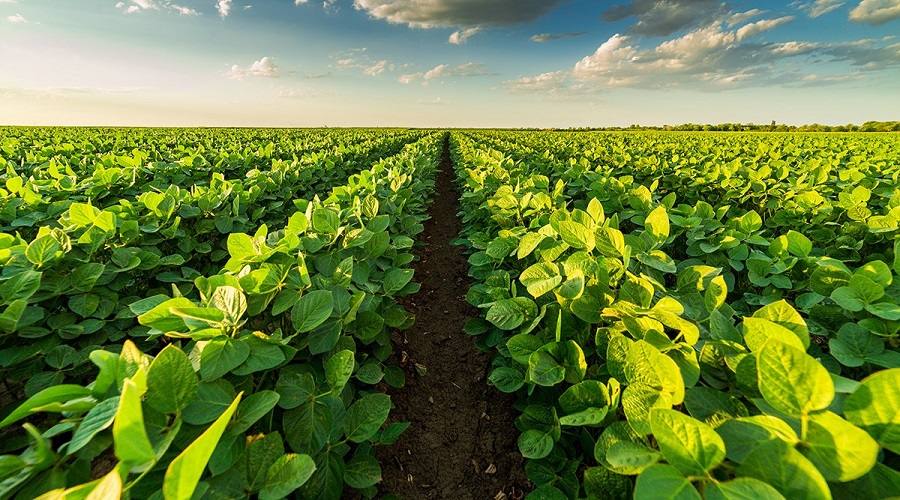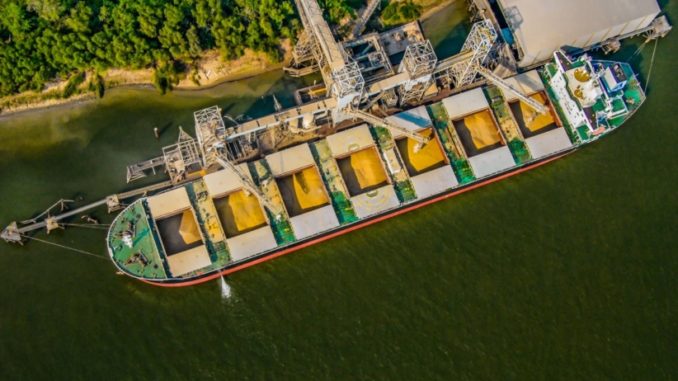RIO DE JANEIRO, BRAZIL – Why does Brazil, which is expected to set a new record this year, produce so much soy? A simple answer is that the grain is the basis for feeding animals that are very present in the human diet, such as chickens and pigs.
The protein content of the crop is much higher than other legumes such as beans. While soybean is 37% protein, this percentage drops to 20% in the carioca bean.
The grain is essential for feeding animals, not just those bred for consumption. Dogs and cats also eat feed made from soybean meal.

For human consumption, there is an incredible variety of products. In addition to the bean, soy is used in margarine, tofu, industrially produced snacks, and sausage.
It is also used in biofuels, tires, cosmetics, chemicals (in the production of paints), and pharmaceuticals.
In one way or another, everyone consumes soy. That’s why it’s in such high demand. And Brazil is the largest producer in the world, producing 135 million tons per year. Soybean meal is the basis for chicken, pork, beef, and dog and cat food.
Soy has two main products: Oil and flour. The bran, which contains between 45% and 48% protein, is used for the composition of all feeds, mainly for poultry and pigs, cattle and farmed fish, and dogs and cats.

The soy consumed in nature for human consumption represents a tiny percentage of the total production, only 2%. The majority goes to animals.
“Bran is an indispensable component of any animal ration, especially for poultry and pigs. Today, Brazil produces about 70 million tons of feed per year, 70% of which is destined for poultry and pigs,” the professor said.
In addition, because the grain is very high in protein, it is increasingly in demand by vegetarians and vegans through consumption in its natural state or the form of derivatives. “Soy is a very high-quality protein that is very rich in amino acids. It is a noble food.”
Is all soy the same?
As soy enters animal feed, it is considered an intermediate protein because it is consumed indirectly by humans, as Embrapa soy researcher Marcelo Alvares de Oliveira explains to UOL media.
Without soy, the availability of livestock – and therefore the amount of meat available – would be lower. The commodity has become a protagonist among other agricultural products because it contributes to feeding the planet.
Oliveira explains three types of soybeans: transgenic, which make up most of the market; conventional, which only accounts for about 3% of the market; and organic, which is produced in minimal quantities.
While the transgenic crop uses genetically modified seeds (GMOs) and chemical inputs, the conventional produce does not use GMOs, although it uses the same type of inputs.
The organic soybean uses neither and follows specific legislation. Because it is a particular niche, organic soy production is more expensive and more profitable than the others.
Tropicalization has allowed expansion throughout the country
Despite these differences, the products made from them are the same, explains Marcelo Oliveira of Embrapa Soja. “The better quality beans with fewer defects are destined for human consumption.

One of the primary uses of soy in human nutrition is in the composition of beverages, such as soy milk and industrially produced fruit-flavored juices. Marcelo also says that today there is a trend towards so-called plant-based products, where soy is used as an intermediate in products such as pies.
Embrapa research has ensured that soy, which originated in Asia, has become tropical by improving soils and plantings. It was introduced in southern Brazil but then spread throughout the country. Together with the United States and Argentina, the country now supplies 80% of the world’s soybean production.
LOGISTICAL CHANGES
The volume of soy from Brazil has caused significant changes in the country’s economy and logistics. With a large portion of production destined for the external market (85 million metric tons), production has led to changes in transportation routes and terminals, explains André Nassar, executive chairman of the Brazilian Vegetable Oil Industry Association.
“The port of Santos grew tremendously due to the number of soybeans exported. The ports that have been created or expanded in the north of the country in recent years are also due to this. At one harvest, about 300,000 trucks are used per year. It is a substantial volume that supports the country’s economy.”
In 2020, exports of the soybean complex (grain, flour, and oil) reached a total value of US$35.2 billion. For this year, the association expects exports to reach US$47.2 billion in September.

Because it is a processed product, the oil market has a slightly higher value relative to the grain. The pressed oil is converted into biodiesel or can be refined and used in restaurants and stores.
Although not yet fully structured, the chain also takes back used oils as part of a circular economy in which part of the product is destined for the chemical industry.
With information from UOL Brasil


